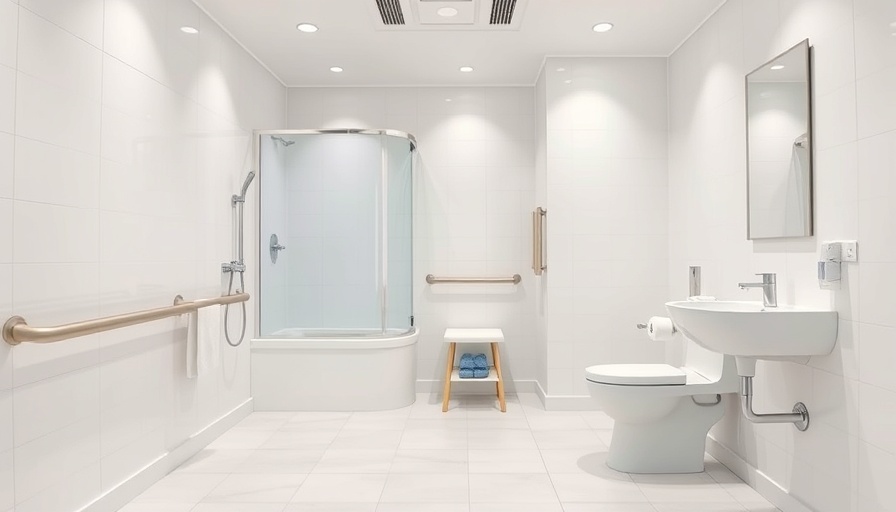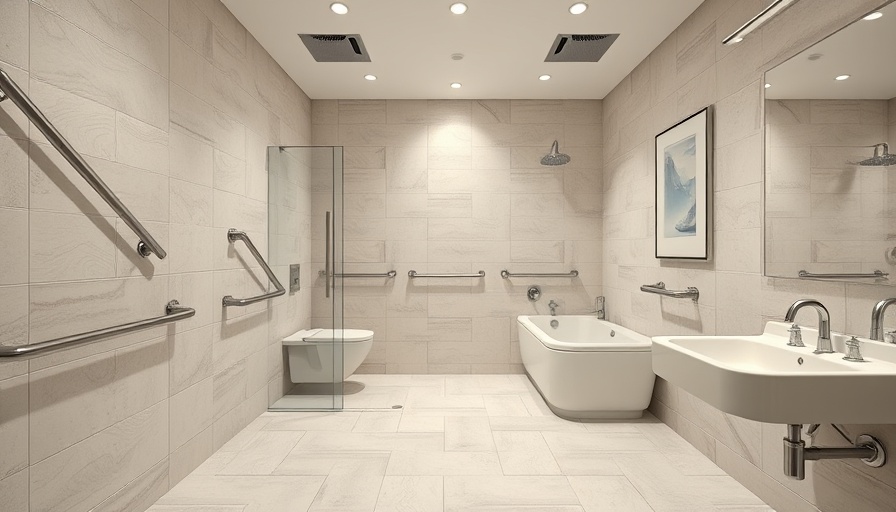
Understanding the Risks: Why Bathroom Safety Matters
Bathrooms can feel like serene sanctuaries, but beneath their tranquil surface lies a host of dangers lurking particularly for vulnerable populations. Statistics reveal that each year, thousands of injuries occur within these seemingly safe spaces, with more than 80% comprising slip and fall accidents that can lead to significant injuries. Understanding these risks is crucial for creating a safer home environment.
For older adults, the consequences of a slip in the bathroom can be severe, leading not only to physical trauma but also increased fear and anxiety around bathing, which can ultimately impact their hygiene and quality of life. In fact, the National Institute on Aging highlights that falls are the leading cause of injury for seniors, underscoring the necessity for proactive measures in bathroom safety.
Key Strategies for Enhancing Bathroom Safety
Transforming your bathroom from a potential hazard into a secure haven may seem daunting, but small, actionable steps can lead to profound improvements. From installing grab bars to optimizing the layout for accessibility, awareness and forethought can foster a safer experience for all users.
Non-Slip Solutions for Enhanced Stability
Investing in non-slip mats and rugs is a very effective strategy to reduce slip risks. These mats should boast excellent traction and be designed for easy cleaning. Placing them strategically near the shower, tub, and sink enhances safety by marking safer zones in wet areas, especially for those at heightened risk.
Strengthening Support with Grab Bars
Grab bars are essential elements in bolstering bathroom safety, particularly for older adults and those with limited mobility. Installing these at proper heights around the tub and toilet can significantly aid users in avoiding falls. They should be securely fastened to wall studs to ensure stability and support.
Creating an Organized and Accessible Bathroom Environment
When it comes to bathroom safety, organization is key. By decluttering your space, you can reduce tripping hazards significantly. Ensure that everyday items are within easy reach and that they are organized logically. For example, keeping medications and personal products stored at waist level minimizes the need for bending or stretching, which can lead to accidents.
Emotional Dimensions: The Psychological Impact of Safety Measures
Establishing a safer bathroom is not solely about physical enhancements; it encompasses emotional well-being as well. The peace of mind that comes from knowing your bathroom is equipped with safety measures significantly reduces stress for both the user and their caretakers. This can enhance the overall experience of bathing, transforming it from a dreaded task into a more enjoyable routine.
Future Trends in Bathroom Safety Technology
The evolution of smart home technology brings exciting possibilities for bathroom safety. Innovations such as smart mats that sense falls and alert caregivers are on the horizon. Integrating these technologies can provide a safety net for seniors and the disabled, ensuring help is on hand when required. Staying abreast of these advancements can empower homeowners to make informed decisions about their bathroom safety.
Practical Implementation: Steps for Accessible Bathroom Modifications
Implementing safety measures doesn't have to be overwhelming. Start with small changes:
- Install Non-Slip Mats: Choose to place them wherever water might accumulate.
- Add Grab Bars: A simple installation can make a world of difference.
- Utilize Storage Solutions: Baskets or caddies can clear countertops for a more organized space.
- Assess Lighting: Ensure the bathroom is well-lit; motion sensor lights can provide accessibility during the night.
These measures cumulatively bring your bath closer to being a true sanctuary for safety and comfort.
Call to Action: Secure Your Sanctuary Today
In conclusion, creating a safer bathroom environment is not only about preventing accidents; it's about fostering peace of mind and comfort in a space that should provide relaxation. Take deliberate steps to enhance safety in your sanctuary today, and empower your family to enjoy this essential space free from worry. Assess your current setup and start making the necessary modifications for a more secure experience.
 Add Row
Add Row  Add
Add 




 Add Row
Add Row  Add
Add 

Write A Comment